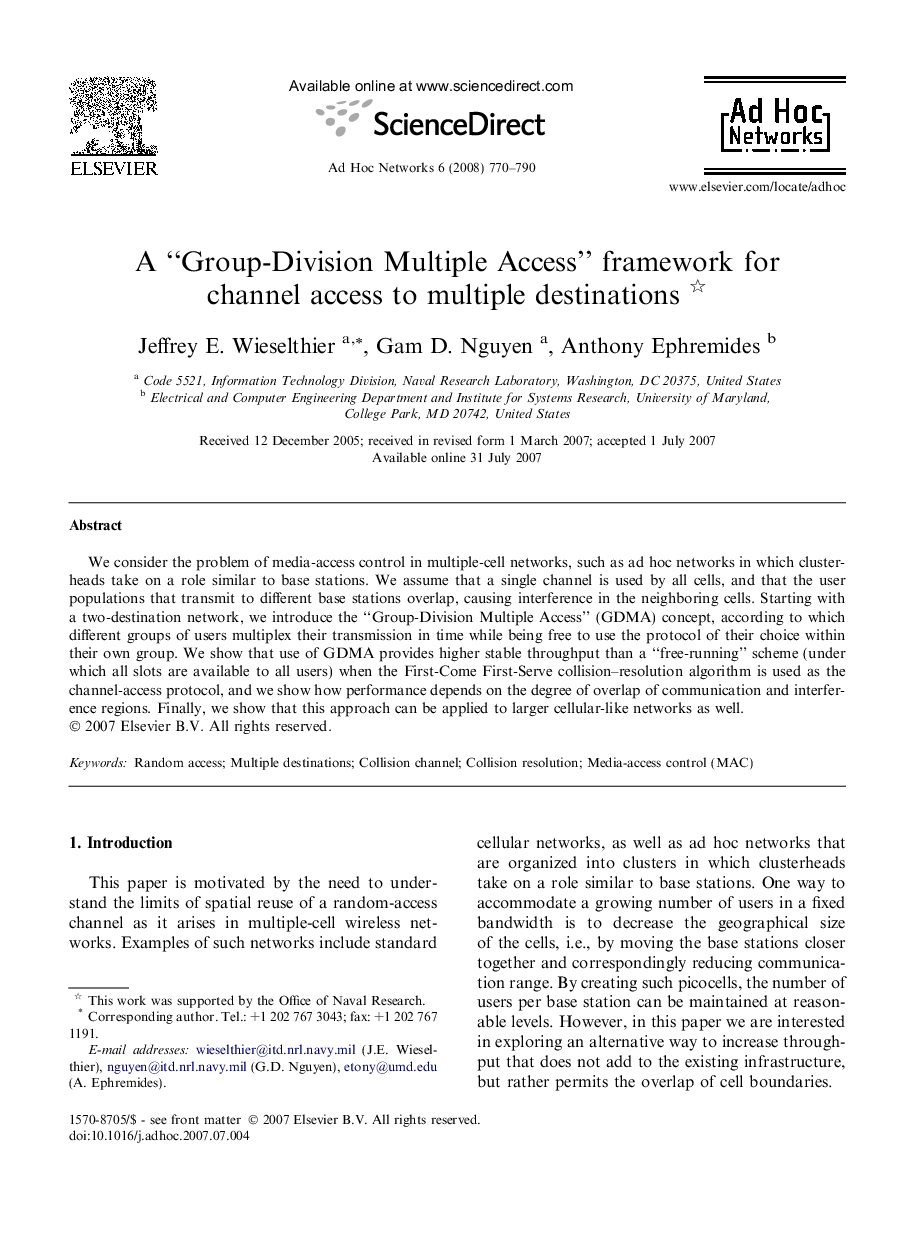| Article ID | Journal | Published Year | Pages | File Type |
|---|---|---|---|---|
| 445690 | Ad Hoc Networks | 2008 | 21 Pages |
We consider the problem of media-access control in multiple-cell networks, such as ad hoc networks in which clusterheads take on a role similar to base stations. We assume that a single channel is used by all cells, and that the user populations that transmit to different base stations overlap, causing interference in the neighboring cells. Starting with a two-destination network, we introduce the “Group-Division Multiple Access” (GDMA) concept, according to which different groups of users multiplex their transmission in time while being free to use the protocol of their choice within their own group. We show that use of GDMA provides higher stable throughput than a “free-running” scheme (under which all slots are available to all users) when the First-Come First-Serve collision–resolution algorithm is used as the channel-access protocol, and we show how performance depends on the degree of overlap of communication and interference regions. Finally, we show that this approach can be applied to larger cellular-like networks as well.
